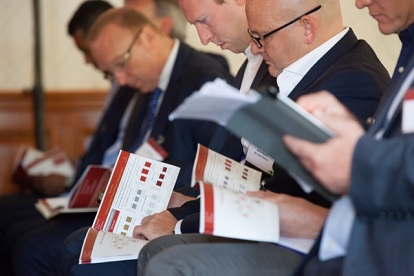Expert: Barry Neilson Facilitator: Innes Miller
Headlines:
- Data is now a critical component in the management of advice firms
- Data combined with new technologies is bringing new opportunities
- Delivering an engaging digital experience for clients is still a challenge
Context:
Understanding the client's goals, circumstances and personality is the foundation of client suitability. Truly 'knowing the client' provides the right raw data and critical context for analysis, advice and recommendations.
Collecting poor quality, or incorrect, data— failures of systems or processes can create a belief that information has been collected when, in fact, it is 'junk' data that will not add value to the assessment of suitability. Firms need to ensure they collate and record beneficiary data – i.e., data that will determine and benefit client outcomes.
There is a seismic shift taking place within the advice market and beyond. Firms are inundated with technology and so many different applications. However, the lack of connectivity remains a significant challenge with firms finding it difficult to aggregate the applications in such a way that they deliver good insight.
Open finance will make things easier and enable a deeper understanding of client financials.
Firms need to consider how data plays a part in helping to evolve client propositions in areas such as intergenerational planning, and engaging younger beneficiaries who are much more dependent on technology than their elders.
To maximise the data opportunity, we also talked about the merits of employing someone specifically to manage data in a firm – even if only as part of their overall role.
One firm gave the example of asking a junior member of the team to take responsibility for it and said that it had made a significant difference to the way in which the overall business now works. The firm said that it was used to better understand clients, how to communicate, levels of financial literacy, more defined market segments, a better understanding of vulnerable customers and how were communications were landing.
Recently there has been a huge leap in how data is being exchanged. Examples included Fineo aggregation, Origo, the use of datalakes in more client orientated applications, and lo-code / no-code applications which offer greater accessibility
Governance – firms need to think about GDPR, but also the broader governance framework.
Consumer Duty – the regulator is now becoming ‘data driven’. Through this firms are required to demonstrate through data that they are meeting the four customer outcomes as defined in the duty.
New apps such as Starling and Monzo are changing expectations. However, delivering an engaging digital experience for clients is still a challenge. Improvements could be made by linking portfolio management to cash flow modelling and financial planning objectives to instantaneously see whether or not action needs be taken to deliver real-time financial planning.
Key takeaways:
There are still a number of key outstanding questions that firms need to address where data plays a key role:
- What is the most effective way to evidence behaviours and needs under consumer duty?
- Most financial planners are good, however the quality of evidence is still an issue and needs to be improved. How can this best be achieved?
- Intentionality – how do you apply, skills, decision making to deliver good client outcomes? These need to be consistent, intentional (not random), differentiated and valuable – i.e., high quality experience across digital, F2F, phone all based on a clear understanding of client needs and expectations which are changing fast
- However, firms need to understand and address the practical challenges which are not always each to acknowledge or address
- Planning is in the midst of a golden period, but how do you improve efficiency? The Moneyinfo was one example of how this could be achieved


